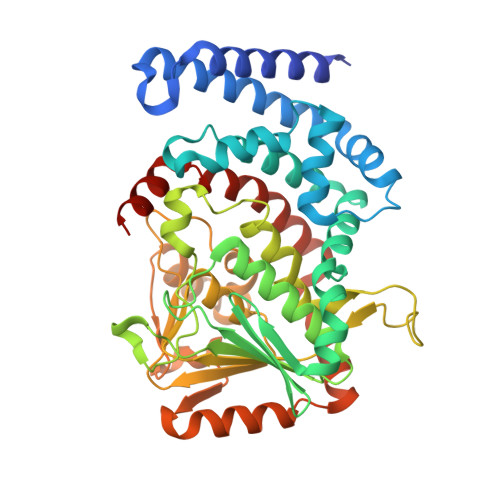Probing the structural basis of oxygen binding in a cofactor-independent dioxygenase.
Li, K., Fielding, E.N., Condurso, H.L., Bruner, S.D.(2017) Acta Crystallogr D Struct Biol 73: 573-580
- PubMed: 28695857
- DOI: https://doi.org/10.1107/S2059798317007045
- Primary Citation of Related Structures:
5KAG, 5KAH, 5KAJ - PubMed Abstract:
The enzyme DpgC is included in the small family of cofactor-independent dioxygenases. The chemistry of DpgC is uncommon as the protein binds and utilizes dioxygen without the aid of a metal or organic cofactor. Previous structural and biochemical studies identified the substrate-binding mode and the components of the active site that are important in the catalytic mechanism. In addition, the results delineated a putative binding pocket and migration pathway for the co-substrate dioxygen. Here, structural biology is utilized, along with site-directed mutagenesis, to probe the assigned dioxygen-binding pocket. The key residues implicated in dioxygen trafficking were studied to probe the process of binding, activation and chemistry. The results support the proposed chemistry and provide insight into the general mechanism of dioxygen binding and activation.
Organizational Affiliation:
Department of Chemistry, University of Florida, Gainesville, FL 32611, USA.
















